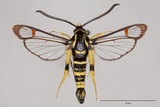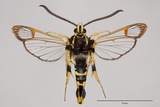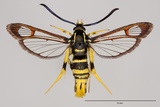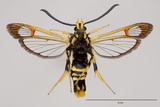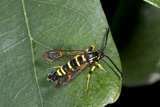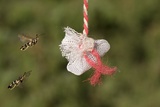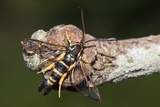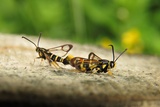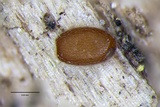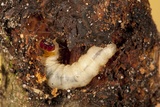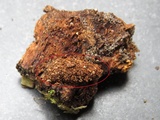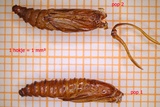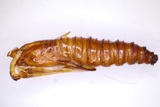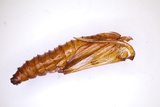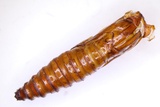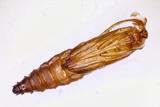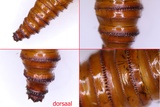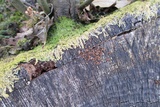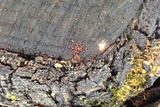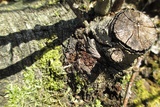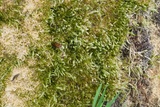Synanthedon vespiformis (Linnaeus, 1761) Species
Last modified: May 16, 2024, 10:56 a.m.
S. vespiformis is a not so rare species throughout Belgium and, in certain places, it can be straight out very numerous.
This species is considered Least Concern according to the IUCN Red List category for Flanders 2023.
Details
- Classification
- Family: Sesiidae > Subfamily: Sesiinae > Tribus: Synanthedonini > Genus: Synanthedon > Species: Synanthedon vespiformis
- Vernacular names
- Eikenwespvlinder (NL), Yellow-legged Clearwing (EN), Sésie vespiforme (FR), Wespen-Glasflügler (DE)
- Synonyms
- Synanthedon asiliformis (Rottemburg, 1775) , Synanthedon cynipiformis (Esper, 1783) and Synanthedon melliniformis sensu auct., nec (Laspeyres, 1801)
- First mention in Belgium
- De Sélys-Longchamps E. 1837. Catalogue des Lépidoptères ou Papillons de la Belgique, précédé du tableau des Libellulines de ce pays. — — : 1–29. On page 21 (as Sesia Vespiformis). view page
- Status
-
Native
Distribution
Imago
S. vespiformis is a medium-sized species (15–26 mm) that is easily be recognised from the clearly defined yellow bands on the abdomen, the large transparent areas on the wings, the bright red discoidal spot on the forewing and the strikingly hairy yellow hind-legs with a sharply defined black band. There is also a striking sexual dimorphism: the anal tuft is predominantly black in the male while it is almost entirely yellow in the female. The proboscis is, as in all species of this genus, well developed and functional.
The males are very well attracted to the pheromone developed for this species and are best lured from early afternoon till late in the evening, but the optimal time span is very weather dependent.
Mine
The caterpillar constructs irregular galleries between wood and bark –mostly into the bark and not into the wood– and often at the transition zone between dead and living tissue. Where many larvae occur together their galleries often merge.
Bionomics
The eggs are deposited in crevices of the bark on cankerous swellings or near damaged parts of the trunk of the hostplant. The females may also deposit many eggs between the exposed transition zone between wood and bark along the entire circumference of the stump of a recently-felled tree. The newly hatched caterpillars bore into the tree and make irregular galleries. After a while, vacated corridors are stuffed with frass that usually turns black and becomes moist and mouldy during the hibernation of the larva. In ideal circumstances this species seems to be able to complete its life-cycle in one year but in most cases the caterpillar overwinters a second time. Often, small and substantially larger caterpillars can be found at the same time although they can both develop to imago the same year, most likely explanation for the remarkably long flight period of this species.
Eventually, the caterpillars construct an exit gallery to the surface of the bark leaving a thin cap over the exit hole. Pupation takes place in a cocoon made from gnawed plant particles spun together and with a silken lining. On hatching, the pupa works its way out through the cocoon and remaining thin bark layer.
Flight periods
The adults have a strikingly long flight period that extends from mid-May till well into September.
Observed on
The larva bores into the stem or branches of mainly Quercus robur but also Quercus rubra and other Quercus species as well as a variety of deciduous trees such as Fagus, Salix, Populus, Prunus, Castanea sativa, ... are accepted as hostplant. Even coniferous trees such as Juniperus communis and Abies alba are mentioned as occasional hosts.
Habitat
S. vespiformis prefers forest(edges) with predominantly Quercus spp., especially where there are stumps of recently-felled trees, but also trees along a road, in parks or even solitary ones can be infested.
